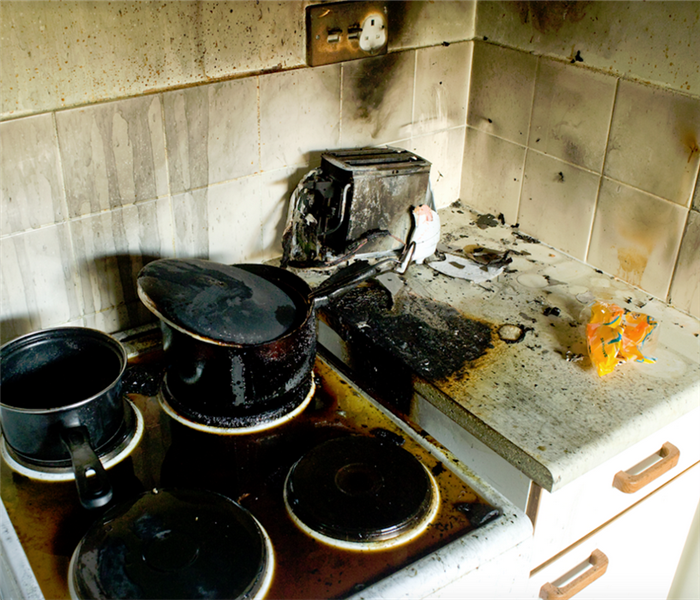Kitchen Appliance Cleanup After Azusa Fire Damage
1/13/2024 (Permalink)
 Fixing your kitchen after fire damage is a big job. Contact SERVPRO for professional technicians and a remediation plan built for you.
Fixing your kitchen after fire damage is a big job. Contact SERVPRO for professional technicians and a remediation plan built for you.
How Professionals Manage Kitchen Fire Residues
The National Fire Protection Association notes that about 44 percent of reported fires involve cooking. Thus, it comes as no surprise that in addition to kitchen counters, walls, and ceilings, residues from the protein-based soot from a kitchen fire affect many appliances, including:
- Exhaust hoods
- Ovens
- Cooktops
- Microwaves
- Dishwashers
- Refrigerators
- Trash compactors
Kitchen Fire Residues Pose Challenges
The fuels feeding Azusa fire damage in the kitchen are literally foodstuffs and oils. Although flames are possible if textiles or building materials in the room catch, soaring temperatures are the primary reason cooking ingredients undergo the chemical changes that transform them into protein-based soot.
The soot is a fine mist of dehydrated food particles and vaporized oil, spraying all nearby surfaces. The residue also spreads throughout the home on super-heated air currents. The coatings are often nearly transparent but tinted yellow or brownish. Once the protein-based soot touches appliances, it adheres tightly like a varnish or lacquer. The residue’s odor can be horrendous as the grease turns rancid during the super-heating process.
Safe Residue Removal
Protein-based residues are tough to remove effectively and safely. Obtaining the services of the Institute of Inspection, Cleaning and Restoration Certification (IICRC)-trained technicians from SERVPRO® ensures research-based protocols that lead to successful outcomes are in place:
- Mitigation of water damage from firefighting efforts first to avoid electrical and slip and fall hazards
- Mastery of the science of residue cleanup that underlies effective cleaning of fire and water damage
- Adherence to sensible precautions, including wearing personal protective equipment (PPE) during active cleaning
- Training in matching residues to effective cleaners and methods further supported by testing in inconspicuous areas to make sure the strategy works
- Carefully considered and implemented manipulations of temperature, dwell time, and the addition of abrasives to improve the odds of physically loosening the residues
Avoiding Surface Damage
Kitchen appliances usually feature reasonably sturdy materials, including metal, paint, glass, plastic, and composites. However, the decorative finishes can be vulnerable to scratching, etching, peeling, smearing, clouding, and even dissolving if the cleaning product is too harsh or cleaning methods are too vigorous. The use of abrasive tools or a gritty additive in a cleaner, in particular, increases the chance that the surface will only hold up if a skilled and experienced SERVPRO technician does the cleaning.
Call SERVPRO of Azusa / Covina at (626) 387-4111 with confidence to schedule help from the harm caused by a kitchen fire. Our team is Faster to any size disaster™, ready 24/7 to evaluate, plan, and respond to your needs.

 24/7 Emergency Service
24/7 Emergency Service